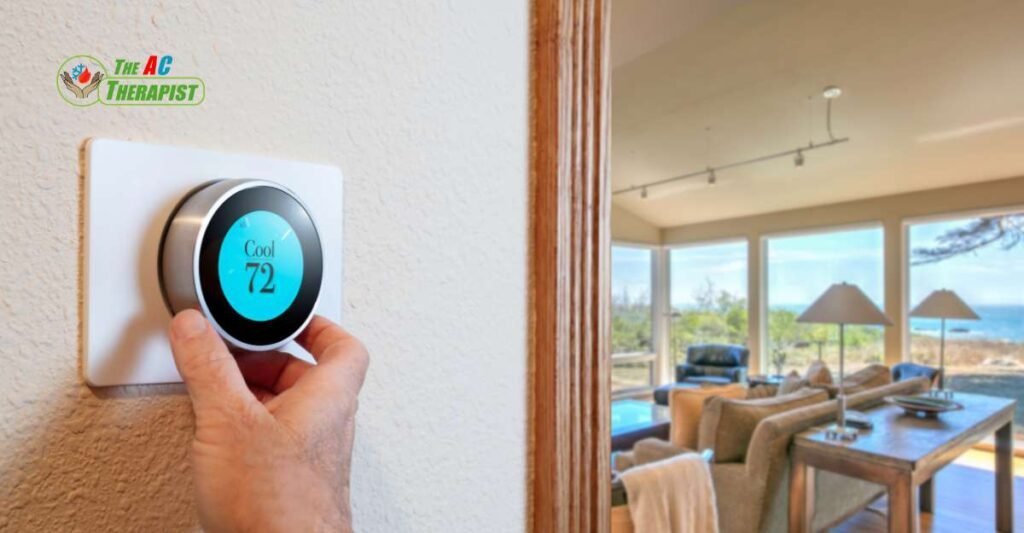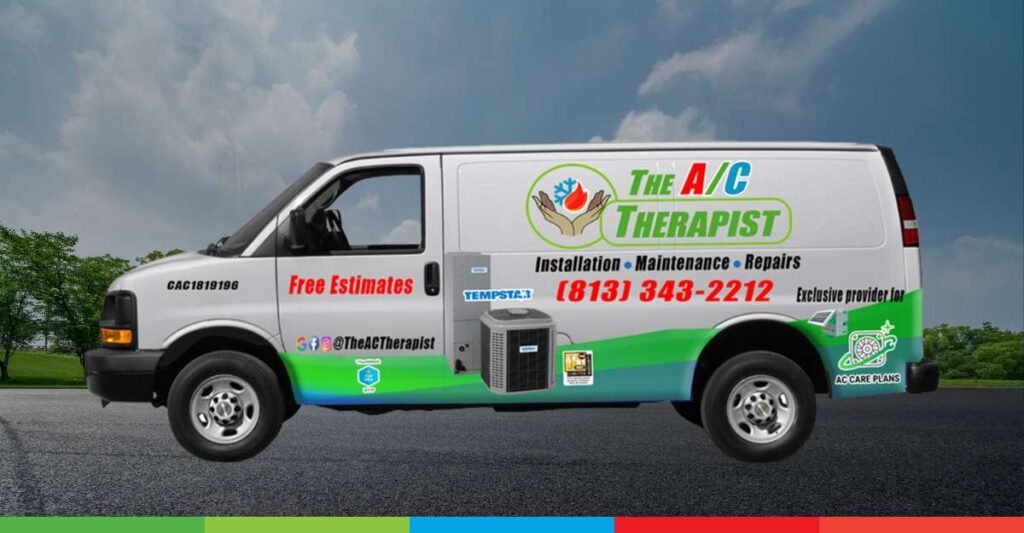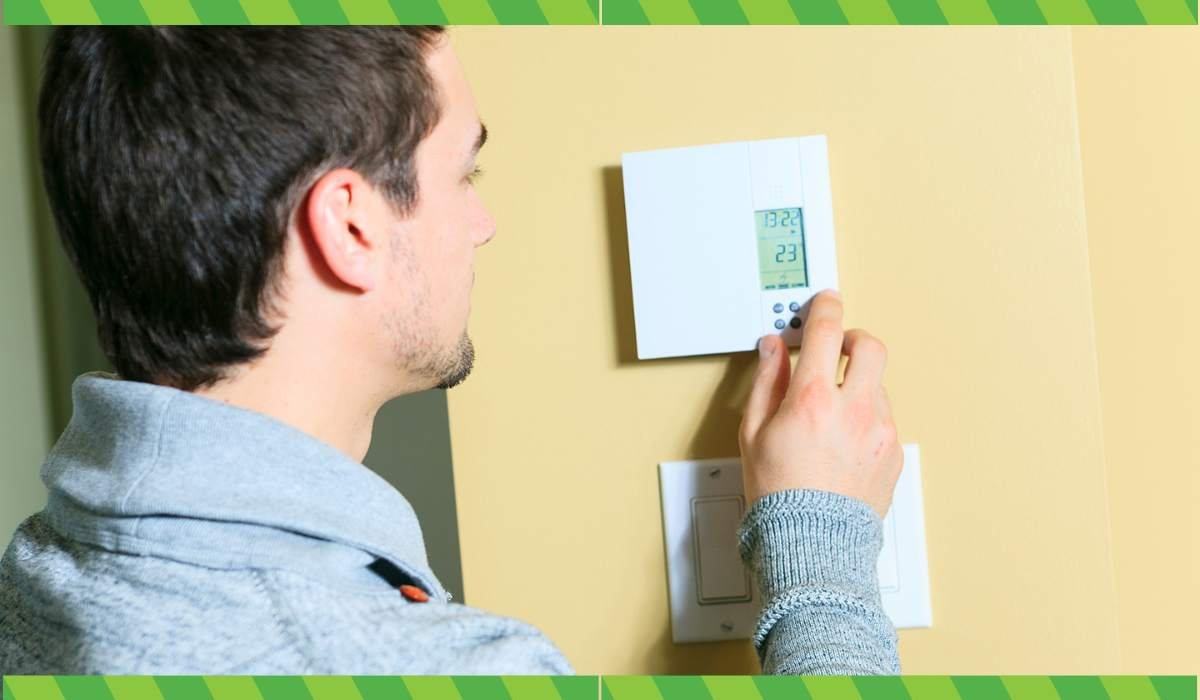5 Reasons Why Your Thermostat Isn’t Working
We’ve all experienced that frustrating moment when you’re trying to adjust the temperature in your home, but nothing seems to work. The thermostat just won’t budge. Before you start calling for professional help, it’s important to check a few simple things first. More often than not, the problem is caused by dead batteries. But if that’s not the issue, what exactly could be causing your HVAC thermostat to malfunction? Let’s take a closer look at the top five common reasons why your HVAC thermostat may not be working properly.

Low batteries
The first step in troubleshooting your thermostat is to make sure that the batteries are in good working order. If the display on your thermostat is dim or blank, it may be due to low power. To check this, press and hold down any button on your remote until it turns off (usually about 10 seconds). You should see some lights come on in response; if they don’t, then you’ll need to replace those batteries!
Replacing them is easy enough: just pop out the old ones and slide in new AAAs—they should go right back where they came from. Be sure not to mix up the positive and negative sides; otherwise, you might end up frying something important when turning things back on!
Improperly installed HVAC thermostat
If your thermostat isn’t working, it’s possible that the problem is with the thermostat itself. If you have a failed HVAC thermostat, there are several symptoms to look out for:
- The AC isn’t responding properly to changes made on the thermostat. If you set your home’s temperature to 68 degrees and then turn off the AC while leaving all other systems running (heating or cooling), but find that it doesn’t change temperatures at all after doing so–that could mean your device has a bad connection somewhere in its wiring system.
- Your furnace isn’t kicking on when it should be because of faulty sensors or switches inside of it; this could also lead to poor performance overall if not addressed immediately by professionals who know what they’re doing!
Incorrect settings
If you’re not sure how to change the settings on a thermostat, there are some things to keep in mind. First of all, it’s important to know what each setting does. Most modern models have an “on/off” button that turns off power entirely, but if yours doesn’t have this feature (or if it’s broken), check out the manual for instructions on how to reset it.
If you do have access to a manual and want more information about how these devices work with HVAC systems, here are some common terms:
- The “heat” setting controls whether heat is being pumped into the house by way of ducts or radiators; this should be set accordingly based on whether wintertime temperatures will be cold enough for heating systems at all (and if so) whether those systems need extra help warming up rooms that aren’t heated directly by them (like bedrooms).
- “Cool” refers not only to the ability to cool a home during hot months, but also to the ability to maintain a consistent temperature. This setting is important to keep the home comfortable during warm weather, especially in areas with high humidity levels. Lastly, the “auto” setting allows the HVAC system to automatically switch between heating and cooling based on the temperature inside the home, offering a convenient way to maintain optimal comfort all year round.
Failed regulator
If your thermostat is not working, the first thing you should check is the regulator. The regulator controls how much power goes to your heating system and keeps it from overheating. If this part of your furnace has failed, there will be no heat coming out of your vents. It’s important to note that regulating systems vary between different types of furnaces; if yours doesn’t have a separate regulator like the one pictured above (usually located near where you connect pipes), then skip ahead!
To test a failed regulator:
- Turn off power at breaker box or remove fuse from circuit box if necessary
- Unplug temperature sensor wires from thermostat (if applicable) and attach them together with wire nuts or electrical tape
- Plug in/reinstall temperature sensor(s) back into their respective ports on new or existing thermostats
Poor thermostat placement
If the thermostat is not placed in a location where it can be easily read and maintained, it will not function properly. The ideal location for your thermostat is one that allows you to see the temperature settings at all times without having to move furniture or other obstacles out of the way.
Additionally, placing your thermostat away from heating and cooling vents will prevent incorrect temperature readings due to poor air circulation within your home.
Finally, try not to place any furniture between yourself and your heating system because this can block direct access between you and your HVAC system’s control panel or display screen (i.e., if there’s furniture between them).
What problems can a faulty HVAC thermostat cause?
A failed thermostat can have a significant impact on the comfort and efficiency of your home. If you’re experiencing any unusual symptoms with your heating and cooling system, it’s important to have your thermostat inspected by a professional as soon as possible. Here are some common signs that indicate your thermostat may be failing:
- Inconsistent Room Temperature: If your thermostat is not functioning properly, you may notice that the temperature in your home is not consistent from room to room. This could be a sign that your thermostat is not accurately measuring the temperature in your home, and is causing your heating and cooling system to work harder than necessary.
- Frequent Clicking Sounds: A clicking sound from your thermostat could indicate a problem with the electrical wiring or connections. If you’re hearing frequent clicking sounds, it’s important to have your thermostat inspected as soon as possible.
- Blank or Unresponsive Display: If your thermostat’s display is blank or unresponsive, it could be a sign that the batteries are dead or that the thermostat itself is not functioning properly. A professional inspection can help determine the cause of the issue and ensure your thermostat is working as it should be.
- Heating or Cooling System Not Turning On or Off: If your heating or cooling system won’t turn on or off as desired, it’s likely that your thermostat is not functioning properly. This could be a sign of a failed thermostat or a problem with the wiring or connections.
A failed thermostat can lead to higher energy bills, decreased comfort, and even more serious problems with your heating and cooling system.
Conclusion
There are many reasons why your thermostat isn’t working properly. The most common cause is low batteries or improper installation. If you have any questions about your thermostat or would like to schedule an appointment for a checkup, contact us today.
The AC Therapist

Stay cool with confidence! The AC Therapist in Tampa offers top-brand air conditioning systems with a 2-year labor warranty and 10-year parts warranty.
Our expert team delivers quality, comfort, and efficiency right to your doorstep. Trust us as one of the best HVAC companies in town.
We can also help you with any other issues, such as:
- New Thermostat installation
- A/C is not cooling properly -When the A/C turns on, it doesn’t cool down the house -The compressor cycles on and off too often
- The air conditioner is leaking water. There’s a burning smell when the air conditioner turns on.
Contact us today at (813)-343-2212 and schedule a FREE estimate! And, if you have plumbing issues, please call Plumbing Therapist, our sister company.









